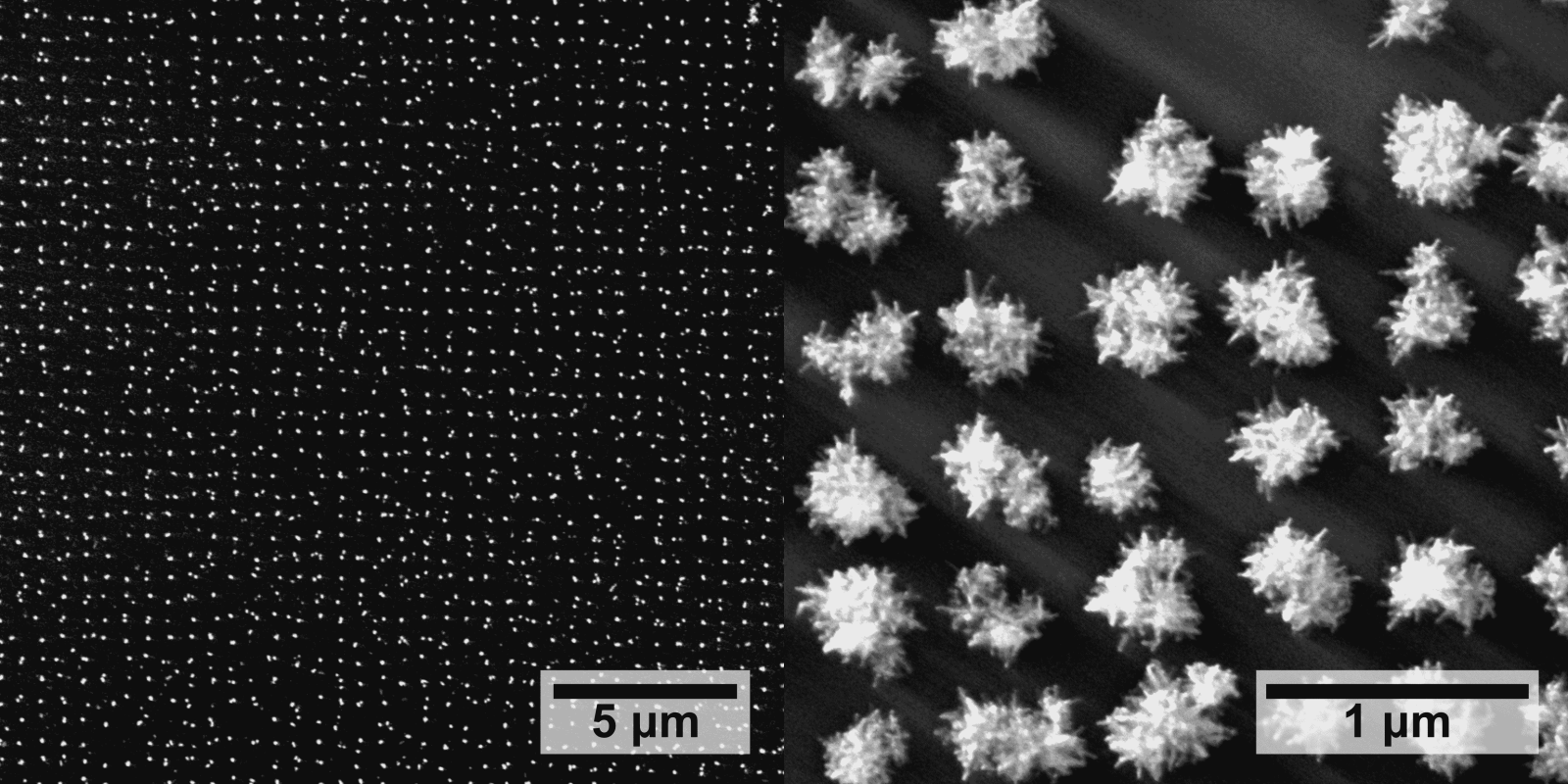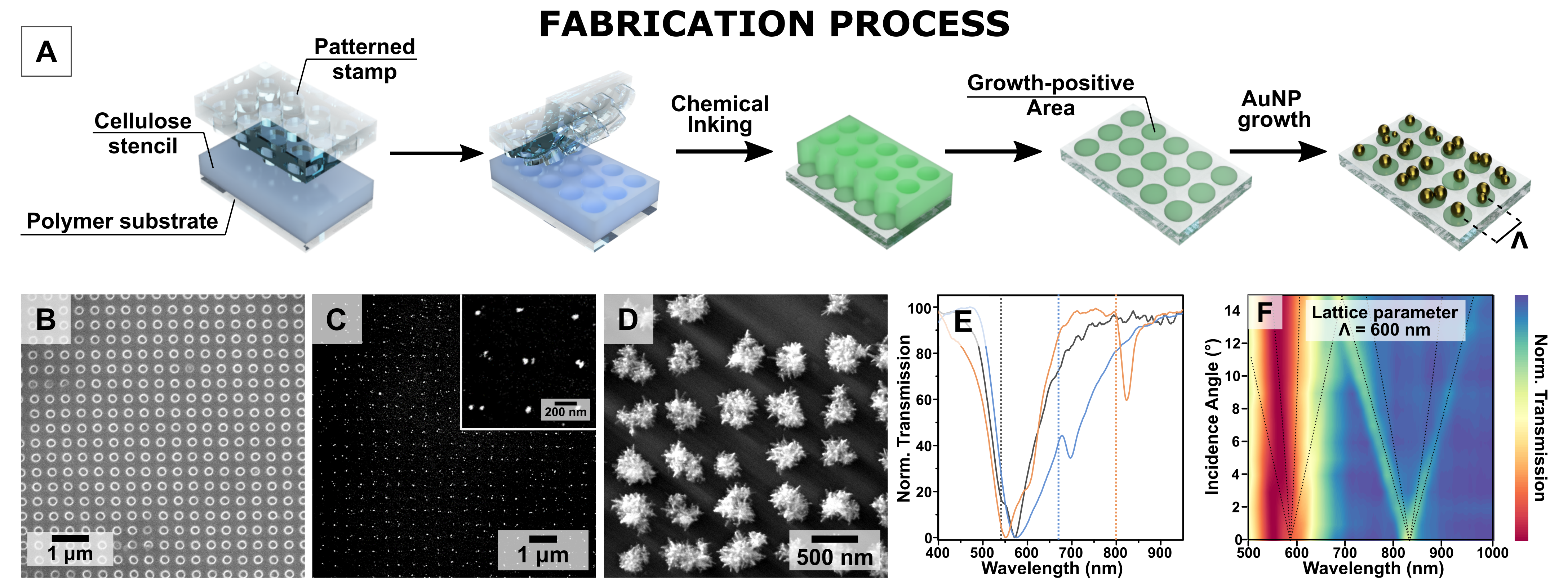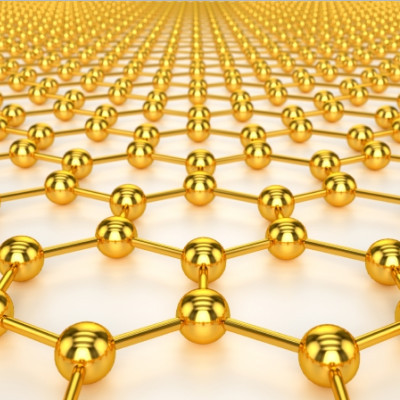Plasmonic nanoparticles prepared by colloidal chemistry have advantageous electronic, optical and magnetic properties, but their implementation into functional devices remains limited by time-consuming and hard-to-scale steps like ligand exchange, purification and self-assembly.

SEMs of plasmonic arrays grown in situ.of gold nanoparticles
In this work, researchers from the Institute of Materials Science of Barcelona (ICMAB, CSIC) and the University of California, Los Angeles (UCLA), demonstrate the preparation of gold nanoparticle ordered arrays directly on substrates using an unconventional bottom-up wet-chemical synthetic approach.
The researchers applied thermal nanoimprint lithography to fabricate ultra-thin (<100 nm) cellulose stencils on polymer substrates, which were used to generate growth-positive and growth-negative areas. The chemical contrast directed the nucleation and growth of plasmonic colloids to specific areas, enabling the rapid production of ordered plasmonic arrays.
Nanoparticle morphology and array periodicity can be tuned easily using this methodology, and the prepared substrates sustain lattice plasmon resonances, which had not yet been achieved using purely in situ chemical reduction.

A: Schematic of the thermal nanoimprint lithography process and in situ growth. B: Scanning electron micrograph (SEM) of the water-processable cellulose mask. C-D: SEMs of plasmonic arrays grown in situ.of gold nanoparticles (C) and gold nanostars (D). E: Normalized transmission under normal incidence of plasmonic arrays with different lattice parameters (Λ): 400 (black line), 500 (blue line) and 600 nn (orange line). F: Dependency of the transmission profile of a 600 nm lattice with the incidence illumination angle.
This work, led by ICMAB researcher Leonardo Scarabelli, and with the participation of Agustín Mihi and Yilli Conti from ICMAB, results from a collaboration supported by a CSIC I-LINK+ 2020 exchange grant between ICMAB-CSIC and the University of California, Los Angeles, with visiting scholar Gail Vinnacombe-Willson, and also with the partipation of Paul S. Weiss and Steven J. Jonas from UCLA. The publication is in Open Access in the journal Advanced Materials.
The in situ growth method presented here represents a versatile platform for the development of wet-chemical shape control and selective surface growth, providing new pathways for the rational design of new plasmonic, magnetic, and catalytic metamaterials.
Read the original article on Institute of Materials Science of Barcelona (ICMAB-CSIC).
